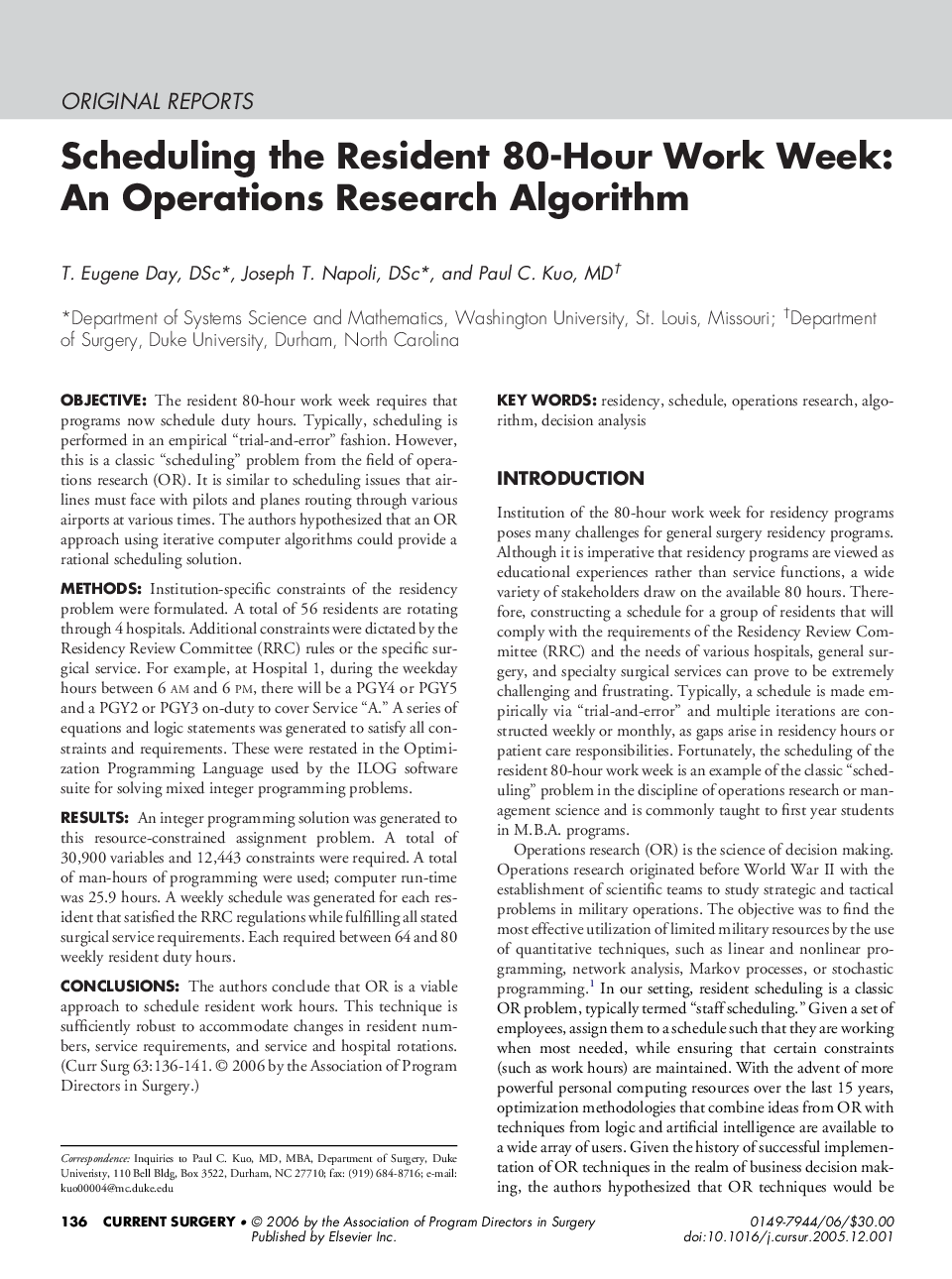| Article ID | Journal | Published Year | Pages | File Type |
|---|---|---|---|---|
| 4284444 | Current Surgery | 2006 | 6 Pages |
ObjectiveThe resident 80-hour work week requires that programs now schedule duty hours. Typically, scheduling is performed in an empirical “trial-and-error” fashion. However, this is a classic “scheduling” problem from the field of operations research (OR). It is similar to scheduling issues that airlines must face with pilots and planes routing through various airports at various times. The authors hypothesized that an OR approach using iterative computer algorithms could provide a rational scheduling solution.MethodsInstitution-specific constraints of the residency problem were formulated. A total of 56 residents are rotating through 4 hospitals. Additional constraints were dictated by the Residency Review Committee (RRC) rules or the specific surgical service. For example, at Hospital 1, during the weekday hours between 6 am and 6 pm, there will be a PGY4 or PGY5 and a PGY2 or PGY3 on-duty to cover Service “A.” A series of equations and logic statements was generated to satisfy all constraints and requirements. These were restated in the Optimization Programming Language used by the ILOG software suite for solving mixed integer programming problems.ResultsAn integer programming solution was generated to this resource-constrained assignment problem. A total of 30,900 variables and 12,443 constraints were required. A total of man-hours of programming were used; computer run-time was 25.9 hours. A weekly schedule was generated for each resident that satisfied the RRC regulations while fulfilling all stated surgical service requirements. Each required between 64 and 80 weekly resident duty hours.ConclusionsThe authors conclude that OR is a viable approach to schedule resident work hours. This technique is sufficiently robust to accommodate changes in resident numbers, service requirements, and service and hospital rotations.
